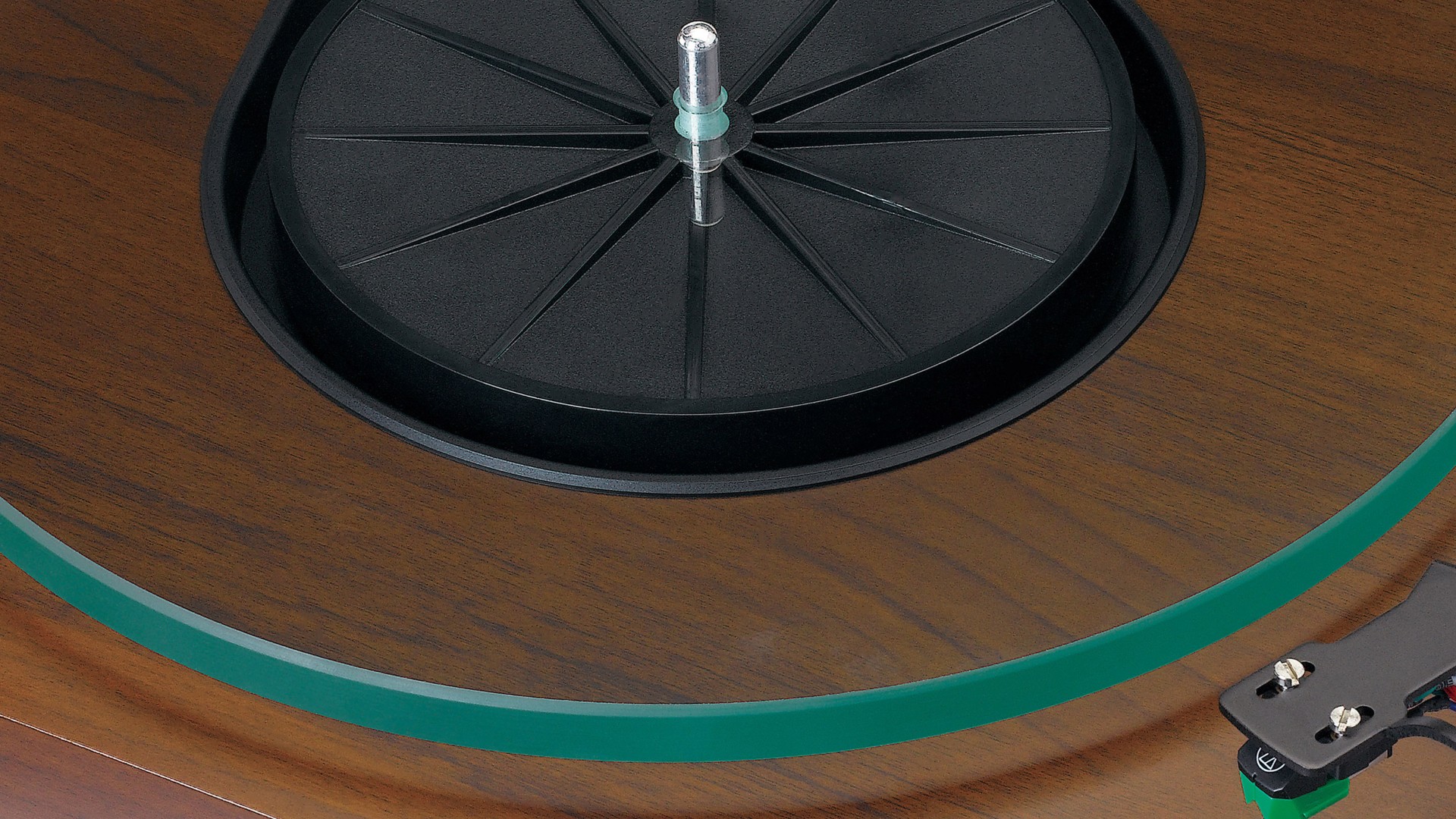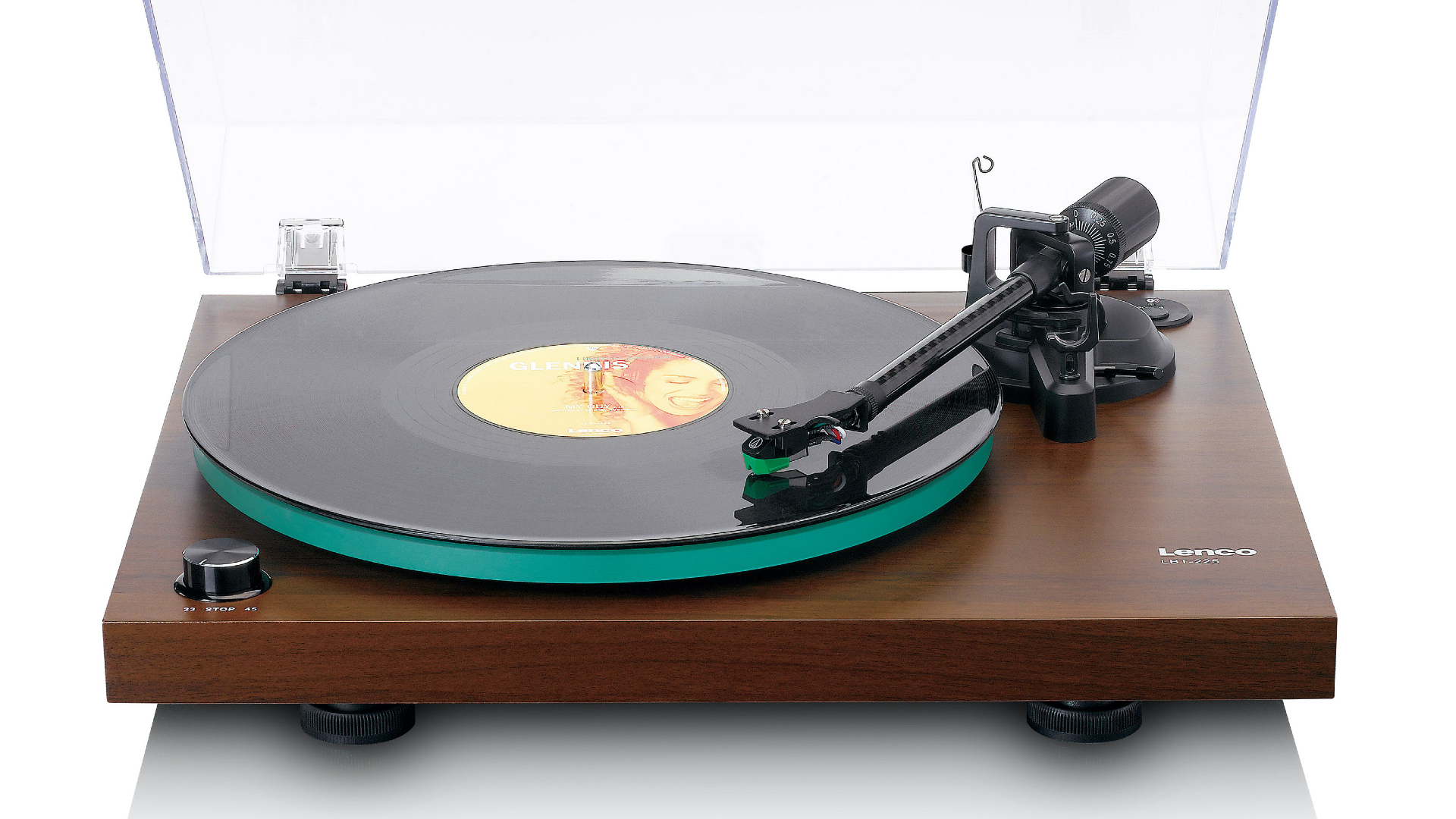
"I really want a harsher and more exposed sound from my vinyl collection", said no one, ever. But look at me getting too harsh, too early. Do keep reading.
Lenco makes some of the most affordable and fun decks around – entry-level options for the fledgling vinyl enthusiast. And I'm all for that. While the firm has yet to feature heavily in our best turntables buying guide, that's hardly fair given that some of our featured propositions there come in at three, four, or even five times the price of the deck that we have included – the aluminum-platter Lenco LS-410.
And what we have here is a similar story. The glass platter featured in the new LBT-225WA will likely represent a step up from the aluminum solution Lenco used in its last record spinner (and remember, this is a company that cut its teeth manufacturing household products molded in plastic and aluminum, releasing its first turntable back in 1949) but that doesn't mean to say I think it's a great idea. In fact, if anything, this bit of information lends weight to my argument.
Why? Glass is heavy, yes, but notoriously brittle, susceptible to resonance, and thus unforgiving, despite technically being an amorphous solid.
And we're talking not just about the density and stability of the plinth's makeup here, but also about the delicate relationship between vinyl and its slip mat. You do get one of those in the box, of course, plus a dust cover, if you use one (I don't – dust is an enemy, but noise interference from a juddering cover is worse).
Another plus is that the belt-driven LBT-225WA features Bluetooth transmission. What that means is that unlike the LS-410, which essentially had a Bluetooth speaker built into the base, this deck lets you ping your record collection to your Bluetooth speaker or headphones, providing a neat setup for enjoying that warm analog sound while lounging at home.
But how warm will it be?
Opinion: Lenco's entry-level decks are to be applauded for fun and features, but acrylic platters are the future

I helped test the older LS-410 for TechRadar's sister publication, What Hi-Fi? and as our review explains, I took issue not with the look of the thing, but with how it performed. When calibrating the tonearm (which is fun, and something I think even entry-level decks should be encouraging) I realized there was too much play in the arm bearings, to the point that the arm actually rattled, creating noise later on.
That said, the LBT-225WA turntable features switchable speeds of 33 and 45 rpm to play vinyl discs at the correct speed, plus an analog-to-digital conversion system with a USB connection for easily ripping and archiving your irreplaceable vinyl collection to your laptop for posterity. And these are all excellent perks for the price, which is £349 (I'm waiting for global pricing and availability, but that works out at around $430 or AU$649).
The turntable also comes with a solid Audio Technica AT-VM95E moving magnet cartridge, carbon fiber tonearm, counterweight, anti-skating weight, and RCA connectors.
But ask any long-term vinyl aficionado what the best plinth (or platter) material is, and you may find yourself on the end of a lengthy discussion involving real birch wood (dense and dimensionally stable) sandwiched with foam and potentially plexiglass, but with an MDF core – or just acrylic, which is denser overall.
In the glass versus acrylic debate, I believe acrylic is the clear winner. Of course, different strokes for different folks (I see on the forums some have experienced a "scratchy" outcome when switching to an acrylic platter) but in my experience, acrylic comes off more open-sounding and just a little bright, which counteracts vinyl's warmth.
Some will say their vinyl sounds harsher but ultimately more transparent on a glass platter and fair play to them. As I said, I like acrylic. Then again, one of my favorite decks, the Pro-Ject Debut Debut Carbon Evo, features a heavy aluminum platter with a ring of TPE (thermoplastic elastomer) on the inside to help dampen resonances.
Then again, if you do plump for an acrylic platter, you can almost always put the record directly on it without the need for a felt or cork mat. And there starts a whole new debate, friend.







